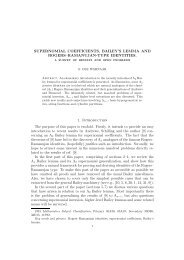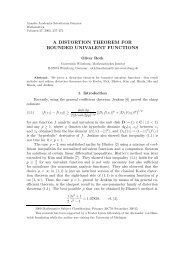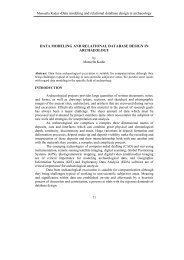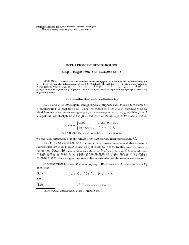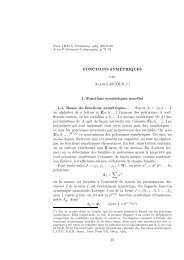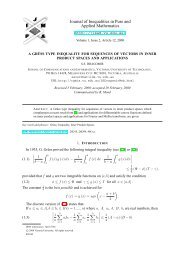CHAPTER 6 TWO-COLORED WALLPAPER PATTERNS 6.0 ...
CHAPTER 6 TWO-COLORED WALLPAPER PATTERNS 6.0 ...
CHAPTER 6 TWO-COLORED WALLPAPER PATTERNS 6.0 ...
Create successful ePaper yourself
Turn your PDF publications into a flip-book with our unique Google optimized e-Paper software.
6.5.3 Half turns and translations. Are there any more p2-like<br />
two-colored patterns? The answer is “no”, and it strongly relies on<br />
figure 6.44, inspired in turn by figure 6.13:<br />
Fig. 6.44<br />
What’s the story here? Well, go back to section 6.2 for a moment<br />
and recall how we established the correlation between glide<br />
reflections of both kinds (color-preserving and color-reversing) and<br />
color-reversing translations: it all follows from the fact that the<br />
combination of a translation and a glide reflection is another glide<br />
reflection (figure 6.13); and that correlation proves (6.2.5) that<br />
there exist precisely three two-colored patterns in the pg family. In<br />
exactly the same way, figure 6.44 shows that the combination of a<br />
180 0 rotation (mapping A to B) and a translation (mapping B to C) is<br />
another 180 0 rotation (mapping A to C). It follows, for example, that<br />
we cannot have a pattern with color-preserving half turns only and<br />
color-reversing translations: P × R = R, etc. (For a complete analysis<br />
of why there can only be three p2 types follow 6.2.5 case by case,<br />
with 6.4.4 (Conjugacy Principle) in mind, replacing glide reflections<br />
by half turns.)<br />
A few additional comments are in order. First of all, the fact<br />
illustrated in figure 6.44 (rotation × translation = rotation) holds<br />
true for arbitrary rotations, not just for 180 0 rotations: a rigorous



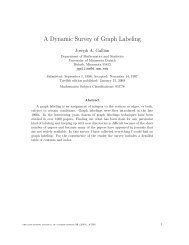


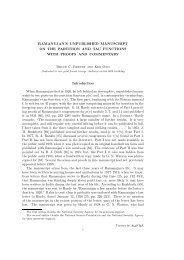
![(.,t ] and [s, .) , where [s,t ] = {s' GT; s ¤ s' ¤ t} , (.,t ] = {s' GT; s' ¤ t} and ...](https://img.yumpu.com/43303393/1/184x260/t-and-s-where-st-s-gt-s-a-s-a-t-t-s-gt-s-a-t-and-.jpg?quality=85)
